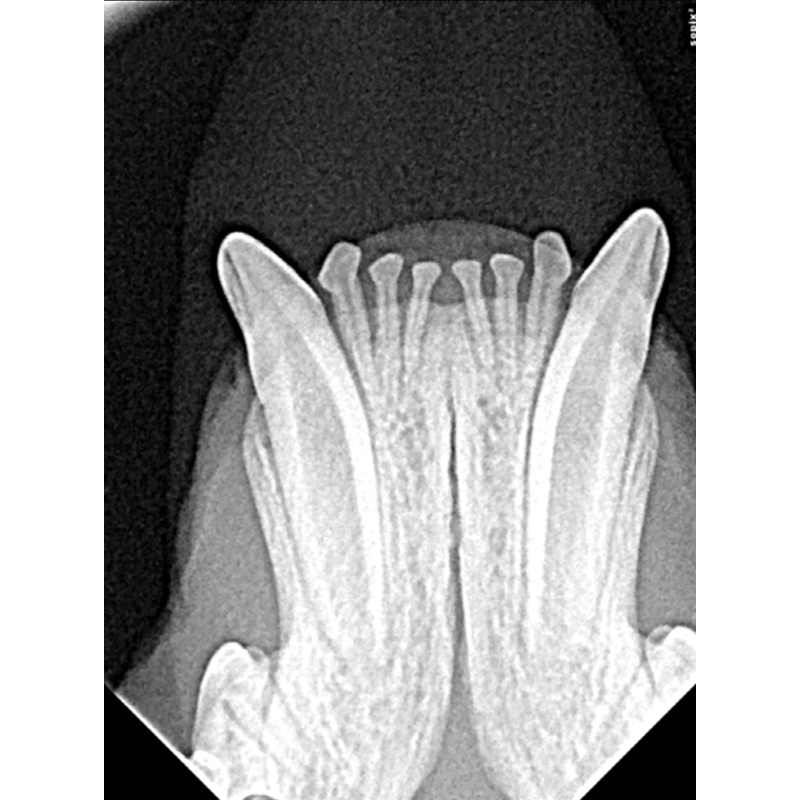Step One. Identify the correct teeth.
The next image taken is of the mandibular canine and incisor teeth. Highlighted on the dental chart and outlined in the picture below.

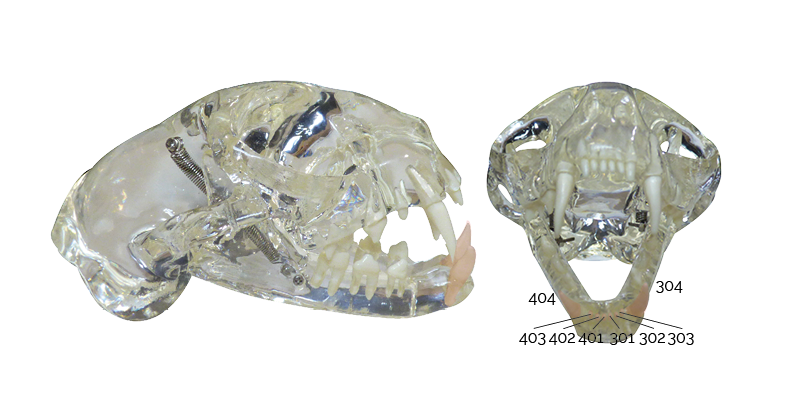
Step Two. Placing the sensor
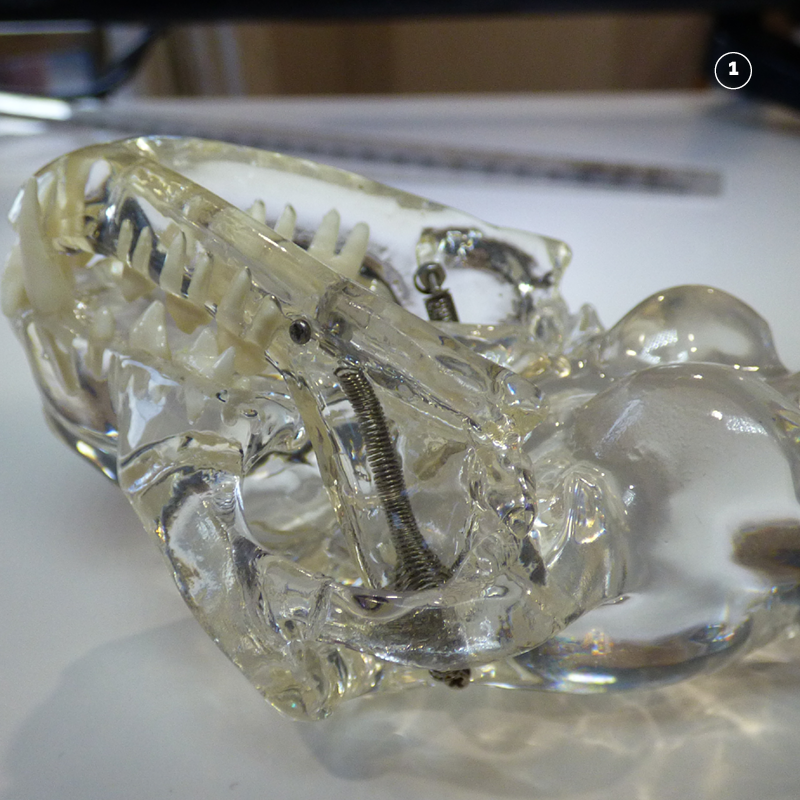
Place the patient in dorsal recumbancy.
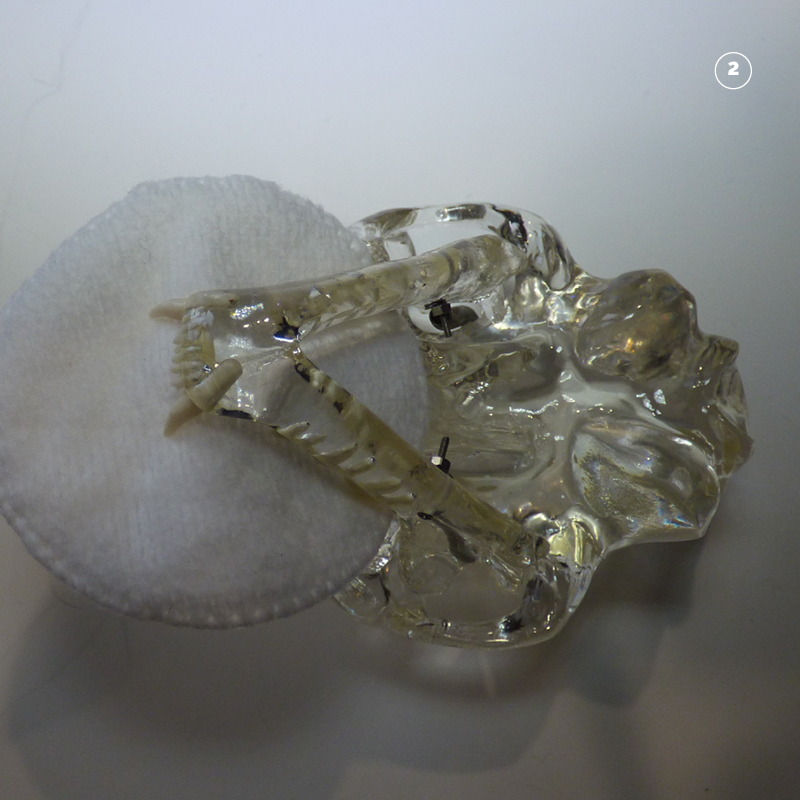
Make a cradle for the sensor by placing a swab directly over the upper canines and incisors.
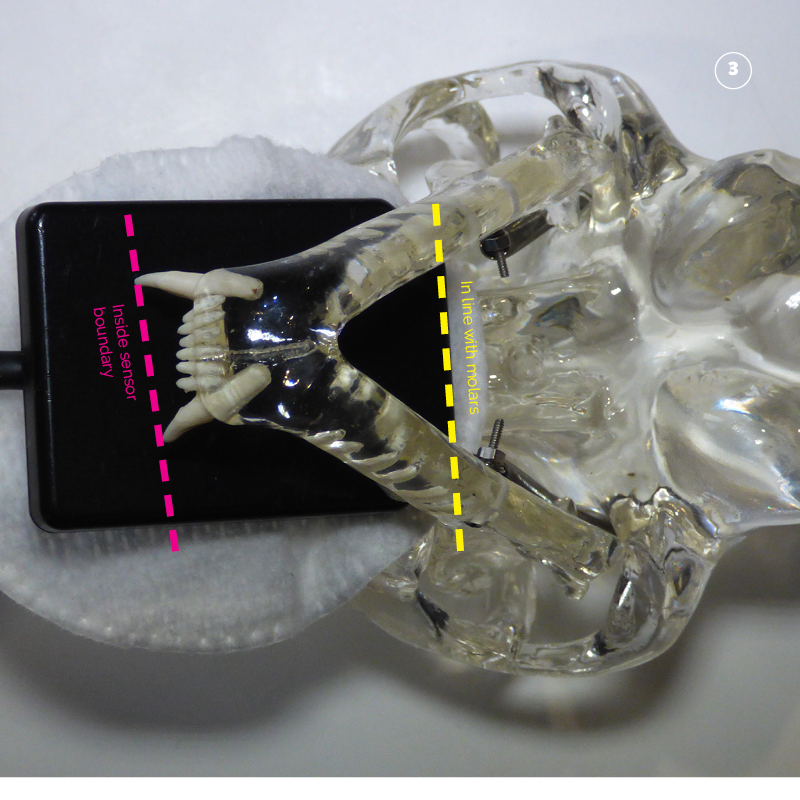
Place the sensor in the mouth. The back edge of the sensor should be in line with the molar (309 and 409) marked in yellow. The cusps of the crowns of the canines (304 and 404) should be inside the sensor boundary.
Step Three. Position the tube head opposite the sensor so that the beam covers the sensor.
Place the cone of the tube head opposite the sensor rostral. With a see through cone the center line can be visually aligned with the sensor wire. Marked with a red circle.
This will ensure that the beam will cover the whole of the sensor.
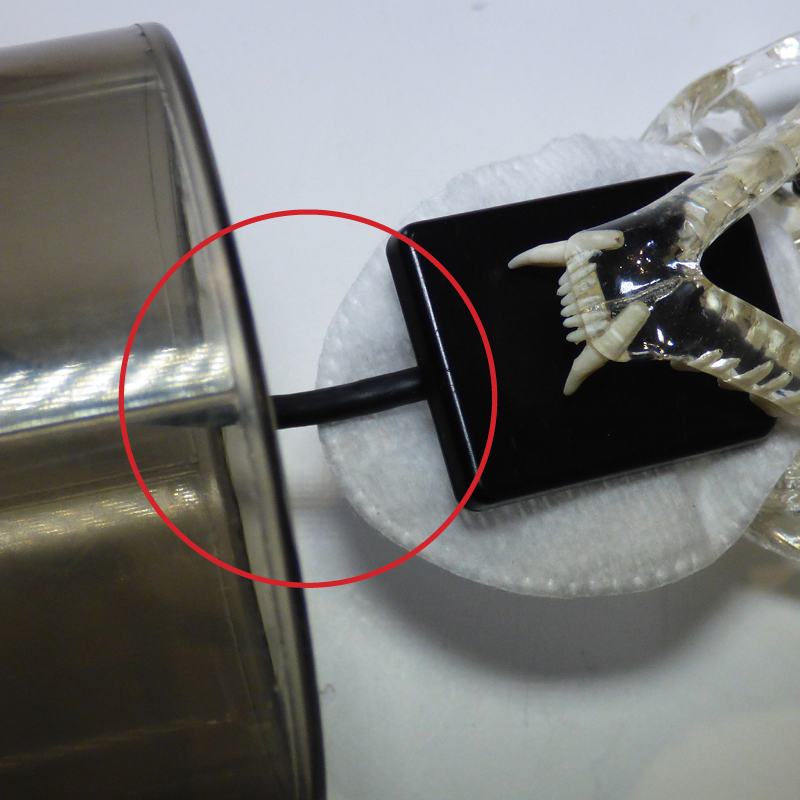
Step Four. Roll the tube head to the correct angle.
As the beam is already aligned with the sensor. Calculate the correct angle using the bisecting angle technique and roll the tube head up to the correct position.

Start by visualising the patient from a lateral point of view.
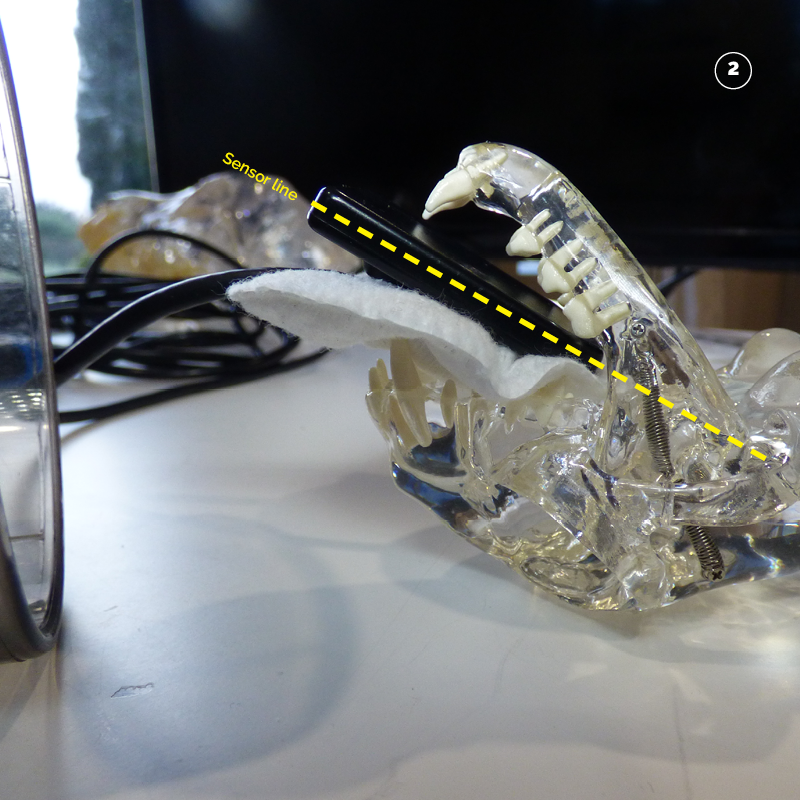
Visualise a line along the sensor running into the mouth. Marked in yellow.
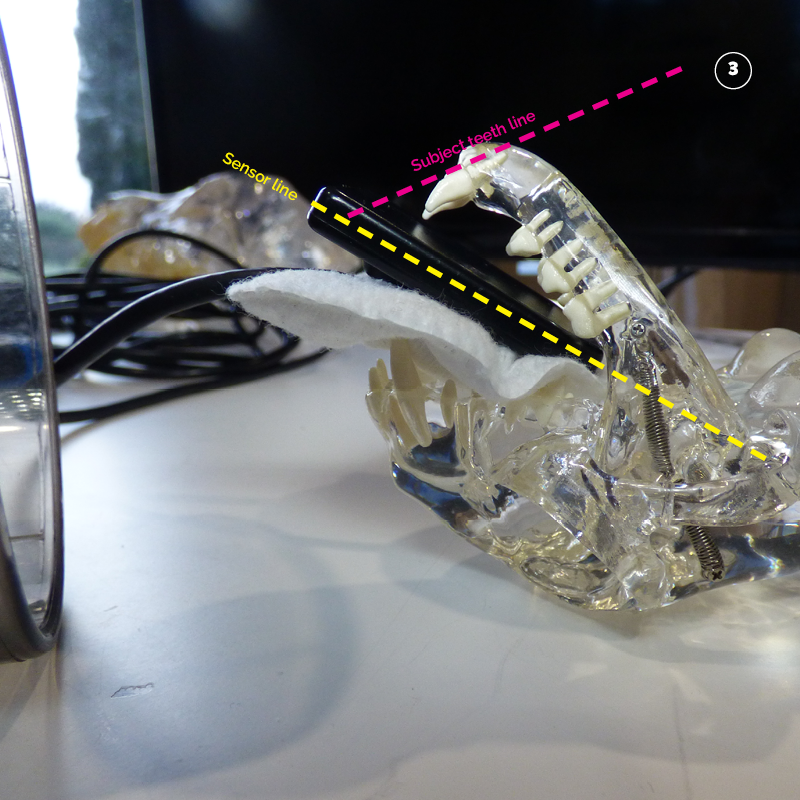
Imagine a line running through the subject teeth. Marked in pink.
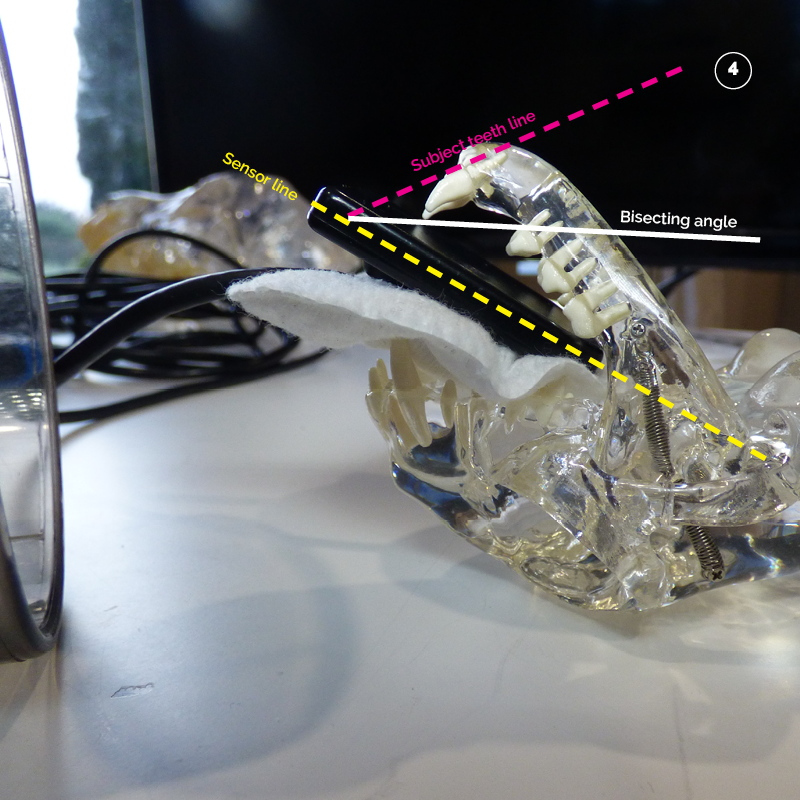
Bisect (half) the angle between the yellow sensor line and the pink tooth line. Marked in white.

The correct angle is then calculated as perpendicular (90 degrees to) the white line that bisects (half’s) the angle of the sensor line (yellow) and the tooth line (pink). Marked in green.
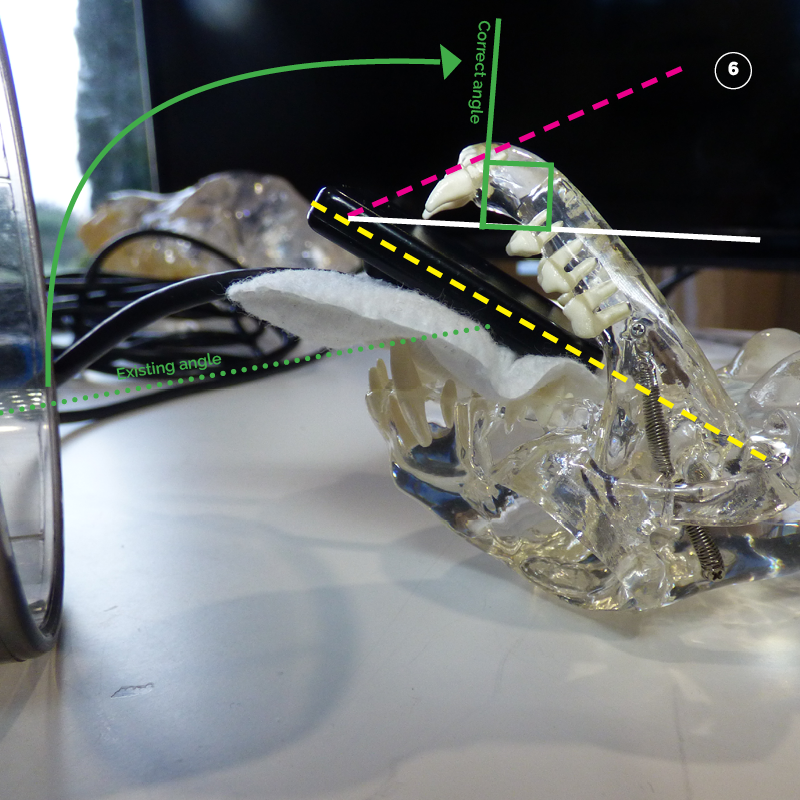
The tube head can be rolled up from its position covering the sensor from step three to the correct angle marked with the solid green line.
The tube head at the correct angle.
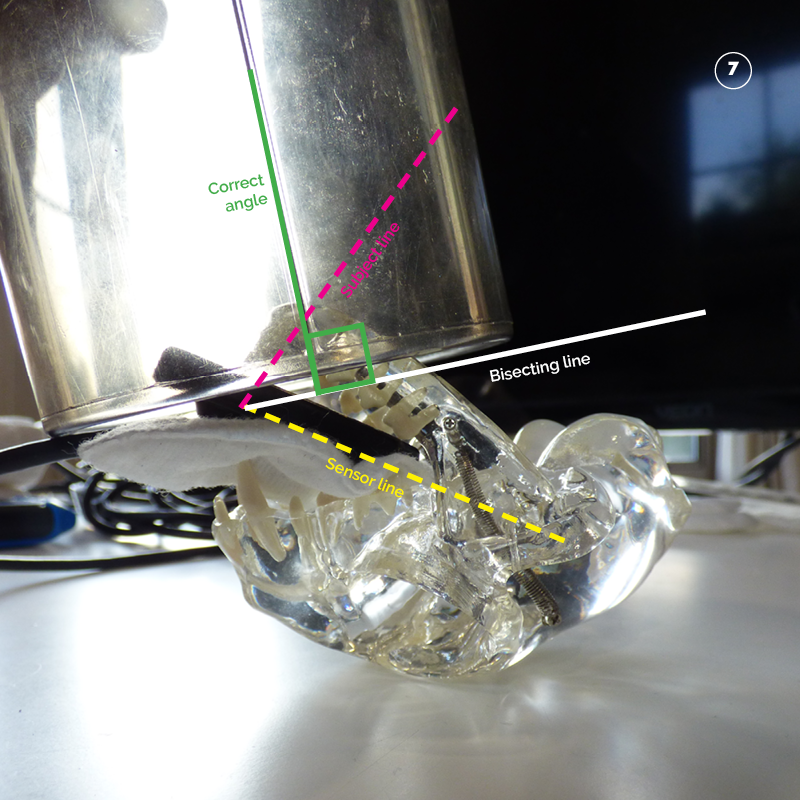
Step Five. Tube head orientation to patient mid-line.
The correct relationship with the mid-line of the patient is in line with the mid-line.
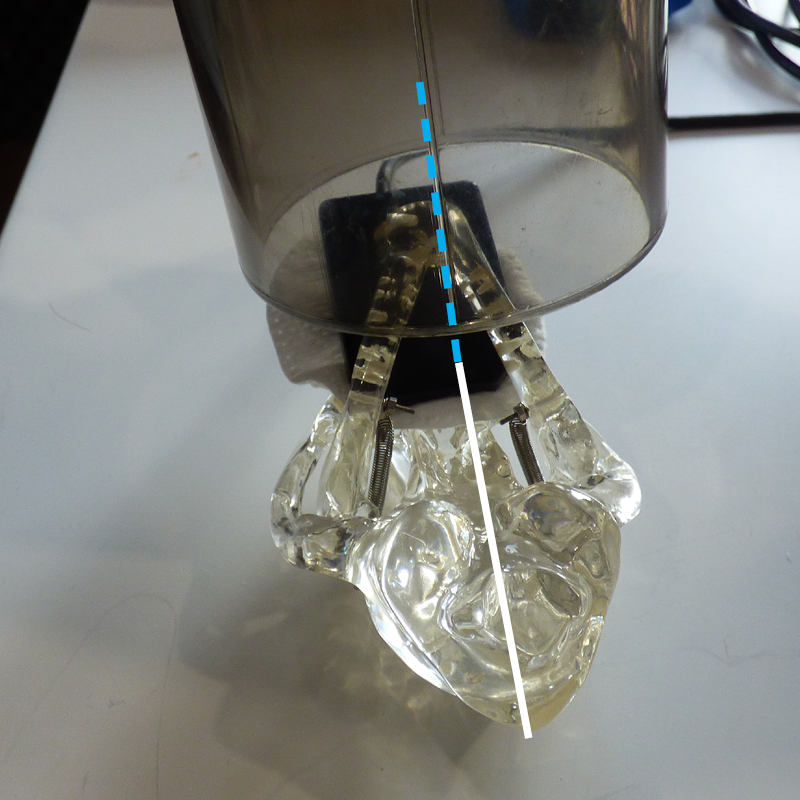
Step Six. Radiation factors
The standard factors with a digital sensor are as follows:
| Patient | Location | KV | MAS |
| Feline | Mandibular Canine and Incisor Teeth | 60 | 0.120 |
